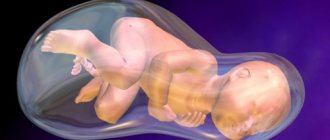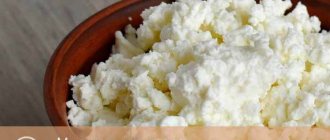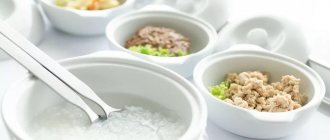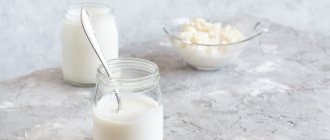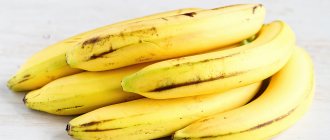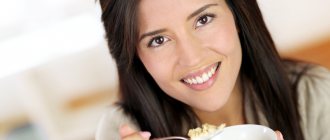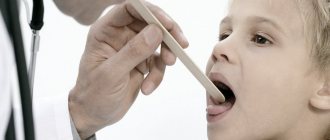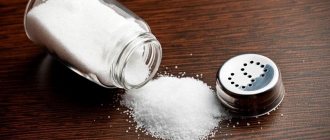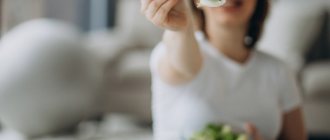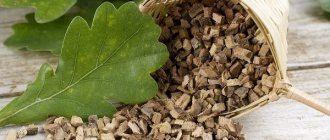A child with persistent diarrhea requires evaluation by a physician because dehydration may occur over time.
Diarrhea is three or more watery bowel movements per day. Loose, non-watery, pasty stools are not diarrhea, and frequent, hard/normal stools are not diarrhea. Acute diarrhea lasts several days, and persistent diarrhea is when the duration of watery stools extends beyond two weeks.
Causes
Common causes of diarrhea:
- viral infections (rotavirus, adenovirus, norovirus);
- bacterial infections (E. coli, salmonella, shigella, campylobacter);
- parasitic infections (cryptosporidium, lamblia);
- food allergies and intolerances;
- food poisoning;
- use of antibiotics:
- irritable bowel syndrome (IBS), celiac disease, Crohn's disease.
Symptoms
In addition to loose stools, diarrhea is also associated with other digestive symptoms, including:
- colic;
- bloating and pain;
- release of gases from the intestines;
- frequent visits to the toilet;
- nausea;
- vomit;
- fever.
If your child has diarrhea, do not hesitate to contact your doctor for advice. Diarrhea is especially dangerous in newborns and infants, as it can lead to dehydration in just a day or two. The death of a child from loss of fluids can occur within a few days.
Briefly about the disease
Diarrhea is abnormally frequent bowel movements with changes in stool character (from mushy to watery).
Main manifestations:
- Persistent increase in fluid content in feces up to 90%
- Increased frequency of bowel movements above 4 times a day
- Increase in stool weight more than 200g per day
- Weakness, increased fatigue
- Cramping pain in the abdominal area
Every person has experienced the discomfort associated with this unpleasant phenomenon, but few people know that from a practical point of view, there are several types of diarrhea depending on the duration of the course:
- Acute: 7-10 days
- Protracted: 2-11 weeks
- Chronic: 3 months or more
The causes of such digestive disorders can be stress, acute intestinal infections, dietary errors, changes in nutritional principles, food intolerance to certain foods, taking certain medications (antibiotics, hormonal drugs), functional disorders associated with chronic gastrointestinal diseases, diabetes.
Diet for diarrhea
Diet is critical for a child with diarrhea. Some foods will help relieve diarrhea symptoms, while others will make them worse.
If a child has acute symptoms of diarrhea, many advise avoiding consumption of coarse fiber because it promotes the formation of watery stools. But things are not quite like that. This largely depends on the type of dietary fiber consumed by the child:
- There is fiber that dissolves in water and is easily broken down in the intestines. These types of fibers are prebiotic, they slow the rate at which stool is passed out of the body, causing it to stick;
- Insoluble fiber is not absorbed by the body, but rather absorbs water as it passes through the digestive tract, thereby greatly softening the stool as it passes through the intestines.
Therefore, you will need to focus on foods with soluble fiber to help restore baby's intestinal flora to form harder stools.
During and shortly after an acute attack of diarrhea, diet should focus on:
- replacing lost fluids and electrolytes;
- eliminating certain foods that aggravate diarrhea, such as fried foods;
- Including easily digestible foods in your diet, such as plain rice.
Rehydration
Drinking fluids is very important when you have diarrhea to prevent dehydration and loss of vital electrolytes (sodium and potassium). Proper rehydration is especially important for children because they can die from dehydration in a short time.
While water is extremely important for preventing dehydration, it does not contain electrolytes. For children, doctors often recommend a special rehydration solution containing the microelements they need, which are lost with diarrhea. You can buy this solution at a pharmacy. Examples of rehydration solutions include:
- Regidron;
- Gastrolit;
- Hydrovit.
Substances that reduce diarrhea
There are a number of natural products that can help reduce bouts of diarrhea. They all contain one or more of three active ingredients: tannin, pectin and vegetable glue.
- Tannins are chemicals that give some foods their hardness, which is their ability to bind and compress tissue. They stick to protein molecules in inflamed mucous membranes (i.e., irritable bowel in the case of diarrhea) and cause thickening of the bowel, which slows the absorption of toxins, helping the body retain fluids. Tannins are found in blackberry and raspberry leaves. Teas made from the leaves of these plants also replenish fluid lost from diarrhea, which is important for preventing dehydration. Be sure to include foods in your diet that contain real leaves and not just flavorings.
- Pectin is a type of soluble fiber that adds firmness to stool and soothes the digestive tract. Products rich in pectin that should be included in the diet are apples, bananas, carrots.
- Vegetable glue is another powerful type of fiber. It soothes the digestive tract and makes stool harder. Psyllium seeds are a generous source of this type of soluble fiber.
Pectin and vegetable glue strengthen the stool when it is too runny and soften it when it is too hard, so they are good for both diarrhea and constipation.
Super food for diarrhea
In fact, there is no food that will immediately stop diarrhea. But there are certain foods that can help reduce its symptoms.
- apples. The pulp and skin of apples are rich in pectin, so this fruit is one of the best foods for diarrhea. Apple pectin also helps with constipation because it does not soften the stool much;
- tea. The tannins in tea strengthen the mucous membrane in the intestines, which helps the body absorb fluid when there is minor inflammation in the intestinal tract. The tea should be brewed without any herbs, spices or milk;
- blueberries and blueberries. These berries work well for diarrhea because they are rich in both tannins and pectin. It is better to eat dried rather than fresh berries. And studies show that eating blueberries reduces the risk of developing colon cancer;
- carrot. Boiled carrots soothe the digestive tract and reduce diarrhea. Carrots are also high in nutrients that are lost during diarrhea;
- green onions, leeks, garlic. Eating foods rich in prebiotics (not to be confused with probiotics), which stimulate the growth of “good” bacteria in the gastrointestinal tract, can be helpful in preventing diarrhea. Natural sources of prebiotics include garlic, green onions, and leeks (they also have antiseptic properties). Eating plenty of these foods will strengthen your immune system and prevent the development of bacteria that cause diarrhea;
- White rice. White rice and products made from rice flour do not contain fiber. Thus, it helps to make the stool much harder;
- bananas. A ripe banana is often a baby's first food because it is soft and easy to digest, making it an ideal food for diarrhea. Bananas also contain a lot of potassium, which is lost through diarrhea;
- yogurt. Yogurt contains active bacteria such as L. thermophilus and L. bulgaricus, which help prevent and stop diarrhea. After several studies, yogurt has been proven to be effective in treating a number of digestive disorders.
Drinking regime
During diarrhea, the child loses a lot of fluid and nutrients, so it is necessary to replenish the damaged reserves as quickly as possible. If a child’s diarrhea occurs without bouts of vomiting, then simply drinking plenty of fluids will help solve the problem. Otherwise, he needs to be given special preparations containing mineral salts necessary for the child’s body.
To solder your baby, you can purchase one of the following drugs: Oralit, Electrolyte, Regidron, Gastrolit. To prepare the drink, you need to dissolve a sachet of the product in 1 liter of cooled boiled water. You need to drink it in portions, offering the baby a little liquid every 20 minutes. The one-time dosage of rehydration agent should be determined by a pediatrician.
In addition to specialized products, you are allowed to prepare decoctions and compotes yourself. Drinks will not only help restore the disturbed water-salt balance, but will help replace lost vitamins and microelements. You can offer your child:
- rice water;
- decoction of rose hips;
- chamomile infusion;
- blueberry juice;
- raisin compote;
- healing mineral water.
You can prepare rehydrating solutions yourself. To do this, in 1 liter of boiled water you need to dissolve ½ teaspoon of soda and salt, as well as a tablespoon of granulated sugar.
The second recipe for the drink: stir ½ teaspoon of salt, pureed banana and 2 tablespoons of granulated sugar in 1 liter of drinking water. If the baby does not have an allergic reaction to citrus fruits, then instead of a banana, it is allowed to use the juice of two oranges or grapefruits.
Foods that can cause diarrhea
Certain foods can damage children's intestines.
- Dairy products contain a natural sugar called lactose, which a child cannot digest due to lactase deficiency. However, many children with lactose intolerance can eat yogurt, which has lower levels of this enzyme than other dairy products.
- Fruit juice and honey contain a natural sugar called fructose, which, when consumed in excess, travels to the colon undigested. This can cause fermentation processes, which leads to flatulence and diarrhea.
- Vitamin C: While the health benefits of vitamin C are incredible, and it can actually protect your digestive tract by boosting your immunity against nasty bacteria, consuming it in excess can cause diarrhea. Large doses of vitamin C, especially more than 1000 mg/day, taken regularly, can cause gastrointestinal problems. If this happens to your child, reduce the dose until the problem goes away.
- Fruits and vegetables. If your child is not used to eating a lot of fruits and vegetables and you suddenly start offering more of them than usual, this can sometimes lead to diarrhea: citrus fruits and beans are usually the culprits. Their consumption should be reduced and then introduced gradually.
Features of processing and use
If you have an intestinal disorder, it is recommended to choose and cook eggs correctly.
It is advisable to use only homemade ones in the diet. It is better to take quail or chicken eggs.
Boiled protein is considered the most useful for consumption. The yolk contains cholesterol and fats, so it is not advisable to eat it if you have diarrhea.
Rules for selecting and preparing eggs:
- It is important to give preference to a product whose shell is free of cracks and droppings.
- Be sure to wash the eggs well.
- There must be a long heat treatment.
- An adult can eat no more than four eggs per day, which is the norm.
- Eggs should not be consumed if there are contraindications.
If you follow these recommendations, this product will not be dangerous and will only bring health benefits.
What to feed a baby under one year old with diarrhea?
If your baby is under six months old, you can safely feed him breast milk or formula unless he has diarrhea due to lactose intolerance. In such situations, the doctor prescribes a lactose-free or hydrolyzed mixture. When the child is over six months old, you can offer him:
- applesauce and banana puree;
- boiled mashed potatoes;
- white rice porridge;
- beet and carrot puree;
- baby porridge made from oatmeal or wheat.
You can give fruit to an infant with diarrhea, but remove the skin and seeds as they are difficult to digest.
Sample menu for the first two days
What can you eat if your child develops diarrhea? A sample menu for the first two days is as follows:
| Breakfast | Snack | Dinner | Afternoon snack | Dinner | |
| First day | Unsweetened tea, a couple of spoons of vorog, homemade crackers | Oven baked apple without sugar | Skimmed chicken broth or carrot soup, steam cutlet, sugar-free compote | Baked apple | Buckwheat porridge and black tea |
| Second day | Any porridge with water, boiled egg | Banana puree | Broth, a piece of steamed chicken breast with boiled potatoes | Herbal decoction | Steamed fish cutlets garnished with stewed zucchini |
Diet for children over 3 years old
Most doctors recommend continuing to eat solid foods if you have diarrhea. The best option is a diet that includes rice, bananas, toast, applesauce, as they are gentle on the intestines. Other foods that a child can eat with diarrhea:
- pasta;
- boiled eggs;
- baked or boiled lean meat;
- steamed vegetables: carrots, beets, squash, green beans;
- mushrooms;
- baked potato;
- grains such as oatmeal, corn flakes and wheat (unless your child is allergic to gluten);
- pancakes, waffles and other white flour products;
- yogurt - the bacteria in it are good for the intestines.
What are the benefits of eggs
Eggs are a very healthy and nutritious food for dehydration that develops with diarrhea. The product contains micro- and macroelements (calcium, phosphorus, potassium, sodium) and vitamins and replenishes the body with fluid.
One hundred grams of boiled, fried or raw type contains more than 130 kilocalories . In addition, eating eggs in moderation will help produce good cholesterol. Another useful property is the ability to restore the intestinal mucosa due to the enveloping effect of lysocin, which is part of the eggs.
The product also helps the body in the fight against pathogens.
Foods prohibited for diarrhea
Here are some foods you should avoid for diarrhea in children:
- Spicy dishes. Spices will irritate the gastrointestinal tract.
- Fried food. Added fats and oils can be harsh on a sensitive GI tract and are more likely to worsen symptoms.
- Sweets. Sugars entering the colon can destroy already sensitive bacteria, making diarrhea worse.
- Foods high in insoluble fiber. Fiber helps keep your digestive system functioning. This is usually good, but if you have diarrhea, insoluble fiber will make your symptoms worse.
Other foods not to eat:
- most processed foods (convenience foods);
- raw vegetables;
- products that lead to fermentation processes in the intestines: cauliflower, broccoli, white cabbage;
- fat meat;
- dairy products;
- citrus;
It is important to feed your baby often and in small portions instead of three or four large meals.
First aid
As soon as the child shows signs of poisoning, he needs to undergo gastric lavage. For this, clean drinking water at room temperature is used at the rate of 0.02 liters per 1 kg of baby’s weight. After the baby drinks the required amount of liquid, he will begin to vomit. Then you need to give him sorbents:
- Filtrum
- Activated carbon
- Enterosgel
- Lactofiltrum
The main stages of recovery of a child’s body with diarrhea
Therapeutic nutrition for diarrhea should take place in several stages:
- Restoring lost fluid
- Frequent and small meals
- Eating easily digestible and light foods that cannot damage the intestinal mucosa
- Dietary food appropriate for the child's age
Diet after diarrhea
Your priority after diarrhea stops should be to provide your child with nutrients that will help speed up recovery.
- probiotics. These medications help replenish your gut with good bacteria to restore optimal balance.
Pediatricians report that the use of probiotics will help treat infectious diarrhea in young children, especially disease caused by rotavirus.
- nutrition. As a rule, it is recommended to eat simple foods, especially during the first day of diarrhea attacks. This could be: boiled potatoes, toast, crackers with salt, baked chicken without skin or fat. It's better to eat denser, softer foods, including oatmeal, bananas, applesauce, and plain rice.
Once the child's condition improves, it is important to gradually introduce regular foods so that the child's digestive system is not overloaded.
Is it possible to eat watermelon
Watermelon is fat-free and an excellent source of vitamins A, B6 and C, potassium, and plant-based antioxidants such as citrulline and lycopene.
It is due to the lycopene content that watermelon has such a rich red color. Moreover, this substance is a very strong antioxidant.
Potassium helps lower blood pressure and also has a beneficial effect on all organs. Plant citrulline has a positive effect on the cardiovascular system.
Two glasses of watermelon juice contain about 15-20 mg of lycopene.
Symptoms may be more severe in older people as their digestive systems are more susceptible due to age.
www.watermelon.org
www.watermelon.org
Using diet to diagnose the causes of chronic diarrhea
When your doctor suspects that diarrhea is caused by a food intolerance or allergy, he or she will ask you to avoid foods that contain:
- lactose, which is present in dairy products and leads to diarrhea in children with lactase deficiency;
- carbohydrates;
- gluten contained in barley, rye, wheat (if the doctor suspects celiac disease);
- other substances.
This is to see if diarrhea improves with dietary changes.
Eating raw eggs
The product in its raw form has an enveloping effect, protecting the intestinal walls from inflammation and irritation. In addition, it is worth highlighting the good absorption of the product and its rich composition. Nutrients are not lost during heat treatment and enter the body. Therefore, it is recommended to drink raw eggs during diarrhea.
There are also recipes for traditional therapy for diarrhea, where it is recommended to drink protein with a few drops of iodine. This medicine has not only enveloping, but also antiseptic properties.
However, it is important to remember that consuming an ingredient that has not been heat-treated increases the risk of salmonellosis infection . Therefore, you should be 100% sure of the origin of the eggs and that they do not contain the causative agent of the disease.
Diet for IBS
IBS is a disease that affects the function of the colon. Common symptoms of IBS include cramping abdominal pain, bloating, constipation and diarrhea.
For many children with IBS, diet can help control symptoms. However, every diet will be slightly different because the types of foods that are good for one may not be good for another, and vice versa. Therefore, one of the first steps for parents whose children suffer from IBS is to become familiar with foods that are known to worsen symptoms of the disease.
Many parents note that in children with IBS, diarrhea worsens after eating certain foods:
- dairy products;
- chocolate;
- caffeinated drinks;
- spicy foods;
- some raw vegetables and fruits, especially broccoli and cabbage;
- fruit juices;
- beans;
- onion;
- artificial sweeteners;
- high-fat foods such as butter, red meat and nuts.
Diet for celiac disease
Celiac disease is a disease in which the small intestine is damaged, preventing the absorption of nutrients from food. Children with celiac disease cannot tolerate a protein called gluten, found in barley, rye, and wheat.
For a child diagnosed with celiac disease, treatment consists of a lifelong gluten-free diet.
This diet involves excluding foods containing rye, wheat and barley from the diet. Products made from these grains are also not allowed. Despite these restrictions, children with celiac disease can eat a well-balanced diet with a variety of foods, including gluten-free bread and pasta. For example, they may eat potatoes, rice, soy, buckwheat, or bean flour instead of wheat flour.
Gluten-free products are becoming increasingly available in regular stores.

